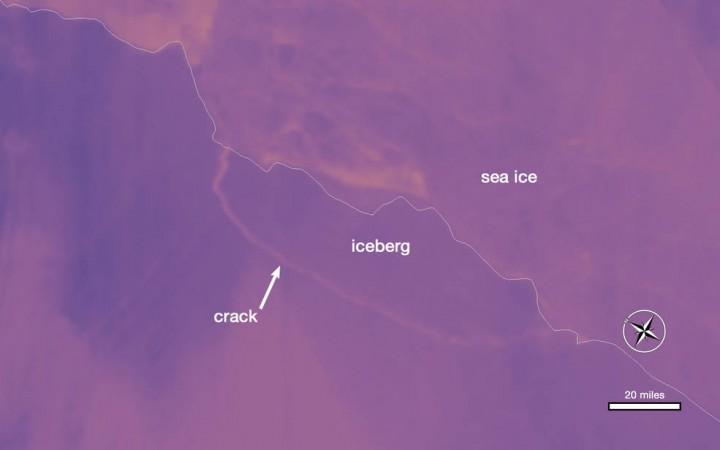![[Representational Image] Antarctica, water, environment,](https://data1.ibtimes.co.in/en/full/640323/antarctica-water-environment.jpg?h=450&l=50&t=40)
Antarctica just lost a giant chunk of iceberg referred to as -- Larsen C ice shelf -- which is big enough to cover Delaware. It is also said to be bigger than Galway.
Also Read: "Alien ice" is seen forming on Earth for first time! Here are top 7 interesting facts about it
The ice chunk broke off from western Antarctica. A UK-based Antarctica research project confirmed about this event on their Twitter account on Wednesday morning.
Breaking news! The iceberg has fully detached from Larsen C - more details to follow soon pic.twitter.com/pdSxDuAGjR
— Project MIDAS (@MIDASOnIce) July 12, 2017
The researchers first spotted a growing crack in the fourth largest ice shelf in the year 2011. They analysed this crack closely and saw it spread at a quicker rate in the recent years which stretched more than 120 miles and resulted in carving out a huge chunk of ice which is greater 10 percent of the ice shelf's area, as per BuzzFeed News.

It's not yet confirmed whether this ice shelf broke off as a large iceberg or in various small pieces. Also, it is not known whether the cracking of this iceberg is a man-made disaster or not.
When researchers noticed new cracks forming within the ice shelf's disconnecting part, Larsen C ice shelf appeared as a giant iceberg which was going to break by early July.
"The calving event has the appearance of being a completely normal break of the ice shelf," said Ted Scambos, lead scientist at the Colorado-based National Snow and Ice Data Center (NSIDC), as quoted by BuzzFeed News.
"The only unusual thing is that it leaves the shelf smaller than it has been in the 125 years since it was first mapped. However, this kind of behaviour is typical of ice shelves all across Antarctica," Scambos added, he also stated that it has lost several icebergs in the past 30 years.

More can be unveiled about the climate change by seeing what happens next.
"My guess is that it will simply grow back — the Larsen C is not close to the instability that we saw in the ice shelves to the north before they disintegrated," Scambos said, pointing toward the cracking of two more icebergs named Larsen A and Larsen B.
Scambos elucidated that further cracking up in the Larsen C ice shelf of Antarctica is likely to suggest a trigger in the global warming resulting in significant structural changes in this corner of Antarctica.
Pace of the flow in different parts of the glacier will also be observed by the scientists and it will be examined whether new features such as water accumulating on the surface of the glacier because of melting, are available or not, which may be an outcome of climate change as per Christopher Shuman, a research scientist at NASA Goddard Space Flight Center.
"It is not inconceivable this is a sign of changes to come. It's hard to predict," Shuman said. "But we'll be watching though," Shuman stated.
The main concern of the scientists is that the frozen water present in most of Antarctica's grounded glaciers resting on the bedrock cold be a case of the rise in the sea levels up to several feet.
According to the scientists, the newly formed iceberg will not play any role in raising the sea level. Just like ice cubes which melt in a glass of water cause no further rise in the amount of water this iceberg will make no changes in the levels of the oceans even on melting.

















